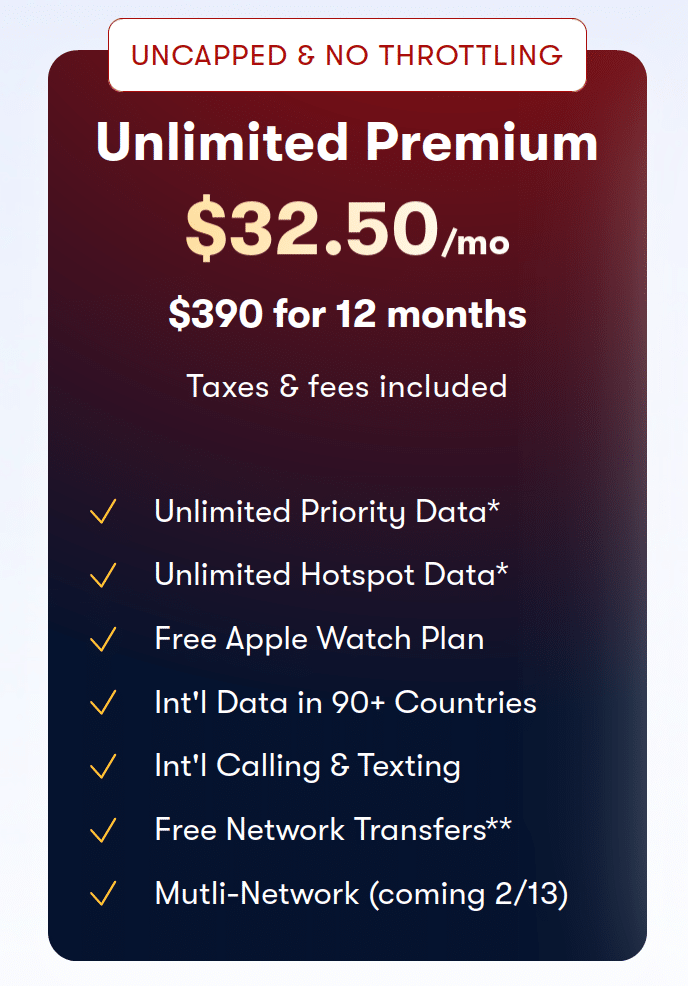Today, US Mobile launched a major update to its Unlimited Premium plan running over AT&T’s network (or as US Mobile calls it, the Darkstar Network).

The plan was already feature-rich before this update, but two new features stand out:
- Unlimited High-Priority Data
- Unlimited Hotspot Data
Both of these are rare on a plan offered by an MVNO. I’m especially surprised to see the unlimited hotspot data. The plan is priced so aggressively that I wouldn’t be surprised if US Mobile eventually limits hotspot access. For the moment, it’s a screaming deal for regular users of hotspot data.
More about the plan can be found on US Mobile’s website & in an announcement shared to Reddit. The plan costs $44 per month or the equivalent of $32.50 per month when a year of service is purchased upfront (new customers can use the code ‘ENDGAME’ to knock that down to $29/mo for the first year).
Reflections
Overall, it appears US Mobile is trying to offer a plan with a price tag typical for MVNOs while offering premium features and avoiding the catches and limitations typically seen on MVNOs’ plans.
With the updated plan, US Mobile is delivering incredible value, but its aspirations are hampered on iOS. Some features people are used to on iPhones aren’t fully supported on the Darkstar network, potentially leading to limitations with stuff like group messages.
In a Reddit comment, US Mobile’s CEO hinted at upcoming improvements:











